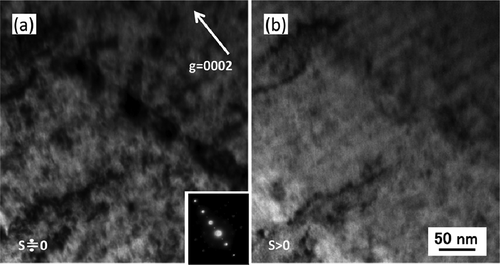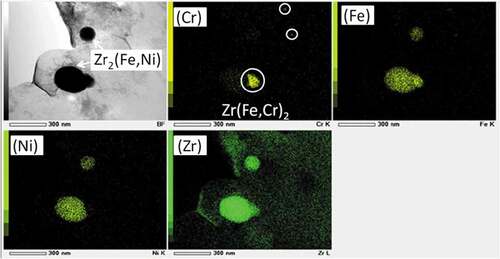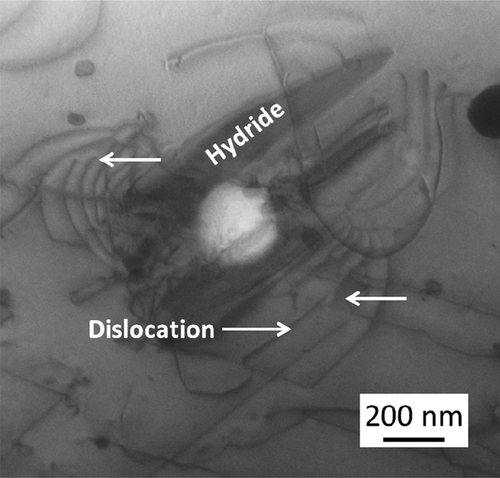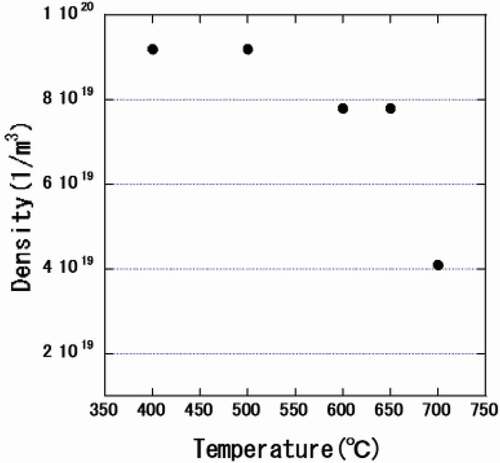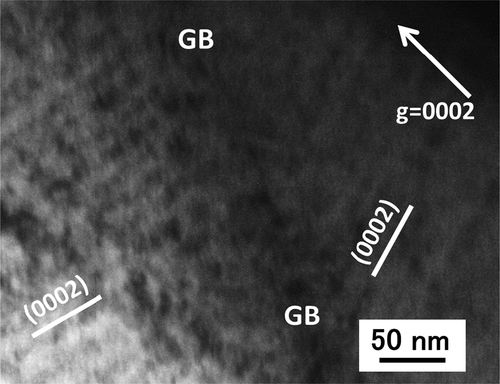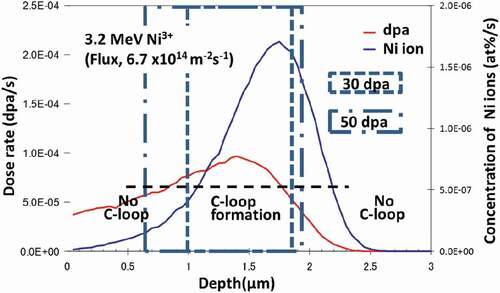Figures & data
Table 1. Chemical compositions of the materials used in the present study (wt%)
Figure 1. (a) SRIM calculation of the damage distribution in Zr irradiated by Ni ions at 3.2 MeV and (b) the specimen chamber used for the irradiation.
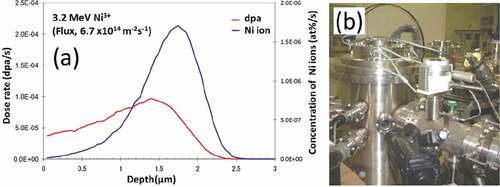
Figure 3. EDS spectrum of (a) Zr(Fe,Cr)2 precipitate and (b) Zr2(Fe,Ni) precipitate before irradiation.
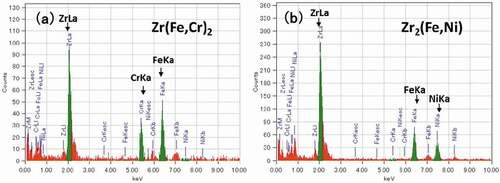
Figure 4. C-TEM images of Zircaloy-2 irradiated with a dose of 30 dpa at 400°C: (a) cross-sectional view of the irradiated region including the specimen surface (lower magnification) and (b) higher magnification images of the peak-damage region.

Figure 5. (a) C-TEM images of c-component dislocation loops (b) and the corresponding HRTEM image of the region shown in (a).
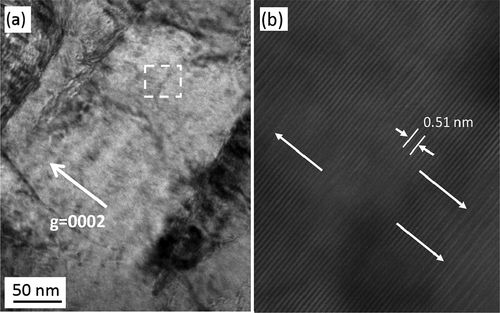
Figure 6. C-TEM images of the samples irradiated with a dose of 30 dpa at 400°C: (a) Zr-1.5Sn alloy and (b) Zr-1.5Sn-0.3Fe alloy.
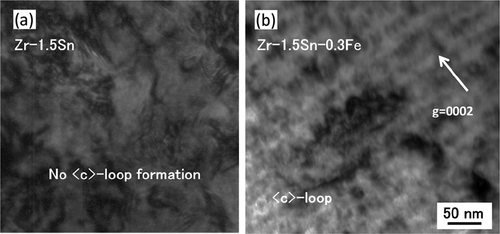
Figure 7. STEM-EDS analysis of Zircaloy-2 irradiated with a dose of 30 dpa at 400°C: (a) bright-field image, (b) chemical maps extracted from a spectral image, and (c) a line scan of a precipitate.
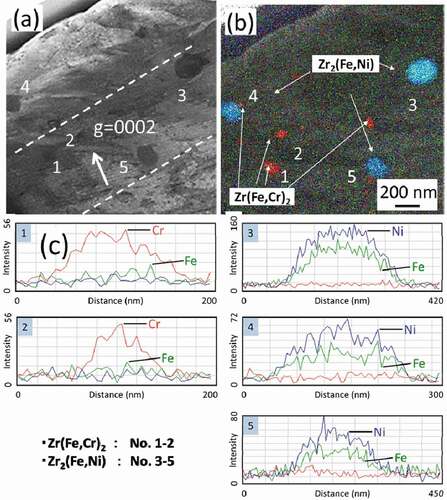
Figure 8. Influence of the dose on elemental content ratios of (a) Zr(Fe,Cr)2 and (b) Zr2(Fe,Ni) precipitates.
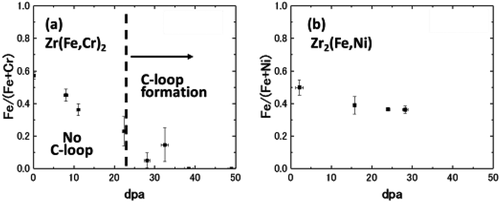
Figure 9. STEM-EDS mapping of Zircaloy-2 irradiated with a dose of 50 dpa at 400°C: (a) Cr and Fe map of the irradiated region including the specimen surface (low magnification) and (b) high magnification of Ni and Fe map of the peak-damage region.

Figure 10. STEM-EDS mapping of Zr-1.5Sn-0.3Fe alloy irradiated with a dose of 30 dpa at 400°C (Fe, Sn, and Zr mapping).
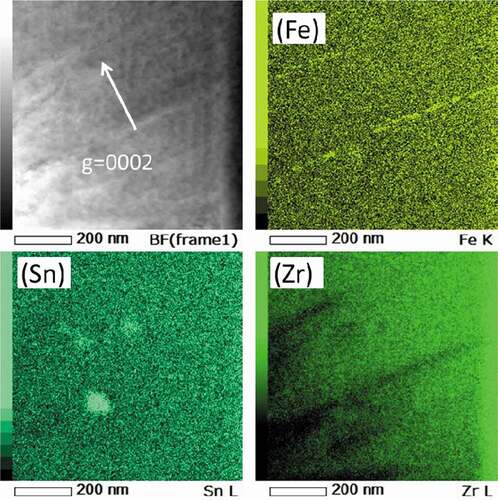
Figure 11. STEM-EDS mapping of Zr-1.5Sn-0.3Fe alloy irradiated with a dose of 30 dpa at 400°C (Fe mapping).
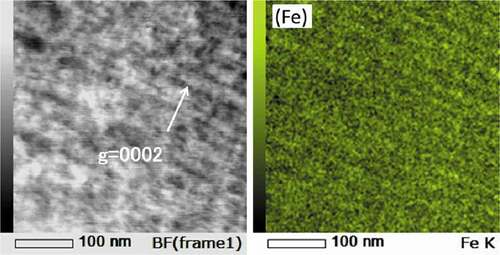
Figure 12. STEM-EDS mapping of Zircaloy-2 irradiated with 300 ppm of injected hydrogen: bright-field and chemical maps extracted from a spectral image of a precipitate.
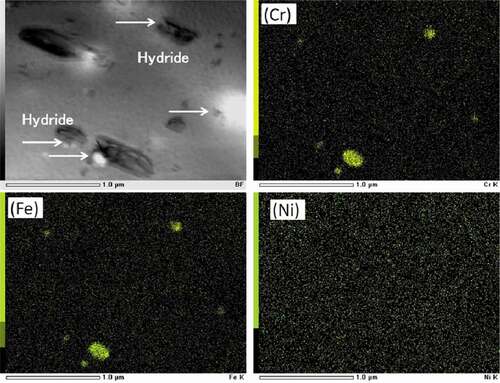
Figure 14. STEM-BF images of Zircaloy-2: (a) microstructure of an unirradiated region exposed to the same heat conditions at 400°C with a dose of 30 dpa and (b) microstructure of the peak-damage region of the sample irradiated with a dose of 30 dpa at 400°C.

Figure 15. Size distributions of δ-hydride: (a) unirradiated region exposed to the same heat conditions with a dose of 30 dpa at 400°C and (b) the peak-damage region of the sample irradiated with a dose of 30 dpa at 400°C.
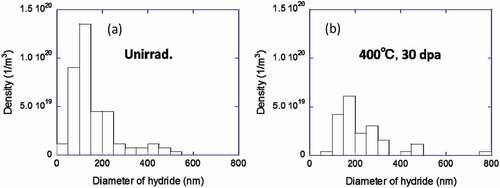
Figure 16. Influence of the annealing temperature on the microstructure in irradiated and unirradiated regions.
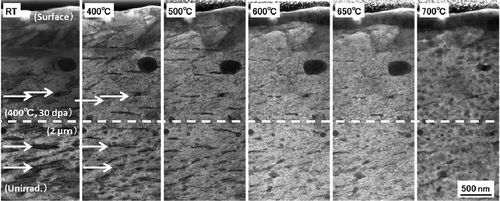
Figure 18. C-TEM images of Zr-1.5Sn-0.3Fe alloy irradiated with a dose of 30 dpa at 400°C: (a) difference from Bragg condition (s) is close to zero and (b) s > 0.
